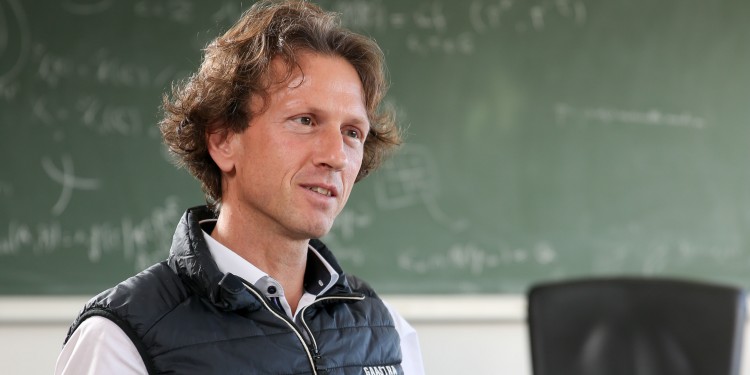
Evaluating and optimising catalytic filters using mathematical methods
Catalysts are commonly used to reduce pollutants released in car exhaust. In order to manufacture catalytic filters with even higher efficiency, industry is increasingly relying on innovative mathematical models and machine learning (ML). In the newly launched collaborative research project “ML-MORE”, researchers at the Cluster of Excellence “Mathematics Münster” at the University of Münster are working closely with the Fraunhofer Institute for Industrial Mathematics ITWM, the University of Stuttgart, TU Darmstadt and Umicore AG & Co. KG, a materials technology and recycling company. The Federal Ministry of Education and Research (BMBF) is funding the project as part of “Mathematics for Innovations”, a programme devoted to developing methods for handling large volumes of data. The BMBF has allocated approximately one million euros to finance the project over the next three years.
According to project coordinator Prof. Mario Ohlberger from the Institute for Analysis and Numerics, “mathematics is making enormous gains in the areas of model reduction and machine learning which we and Umicore are now putting to use for industrial application.” Due to the current situation, the project kicked off with a video conference. It is certainly a big advantage that almost all the project participants have known each other for years and have frequently collaborated on joint projects. “I’m especially pleased that we’re working once again with the Fraunhofer ITWM and its High Performance Center for Simulation and Software Based Innovation.” The High Performance Center is a close partner of the Cluster of Excellence “Mathematics Münster”. “Our goal is to transfer the results from basic research to industry,” explains Dr Konrad Steiner, managing director of the High Performance Center. “In this respect, the new project is a perfect example of a promising network of university and industrial stakeholders.”

Prof. Martin Votsmeier of the TU Darmstadt is modelling the chemical reactions in the catalytic filters. The industrial partner Umicore is responsible for providing the geometric data on the pore structure inside the catalytic filters, e.g. using computer tomography. The team at ITWM, headed by Prof. Oleg Iliev and Dr Konrad Steiner, will incorporate the chemical models into a geometric spatial model of a complex pore structure. This will enable them to conduct virtual experiments on catalytic functionality and evaluate how well the catalytic filter works. Yet these simulations are far too complex and expensive to provide an adequate set of training data for the machine-learning process. This is where model order reduction (MOR) comes into play. Using the ITWM data, the research group in Münster will develop reduced models which can generate more training data in a considerably shorter period of time. These results will be used by Prof. Bernard Haasdonk and his team in Stuttgart who are tasked with developing quickly analysable models for predicting the efficiency of catalysts using innovative ML methods.
In the end, all the results of the project will be integrated into a new ML tool which will help the industrial partner Umicore develop more efficient catalytic filters and which can be potentially applied to other comparable processes.
